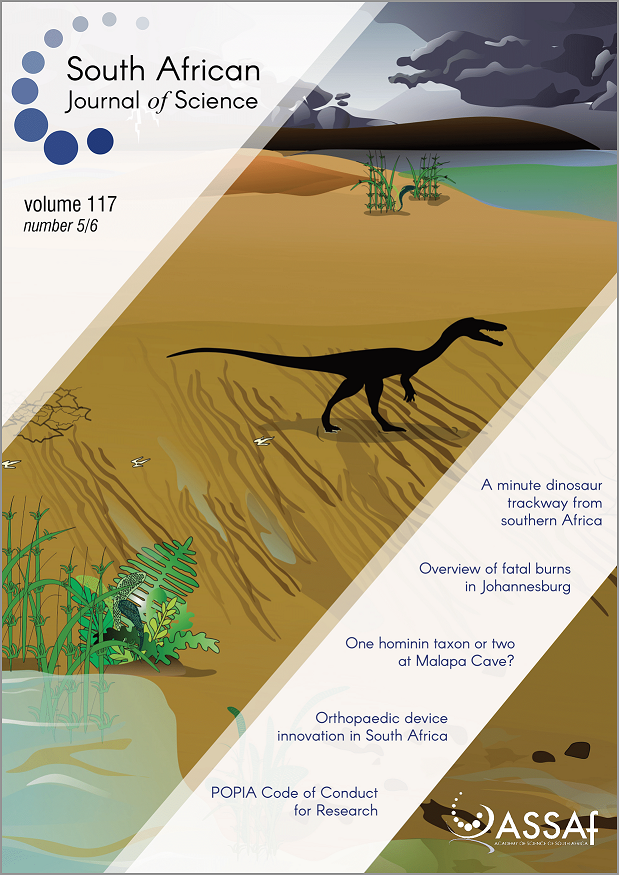Darting towards Storm Shelter: A minute dinosaur trackway from southern Africa
DOI:
https://doi.org/10.17159/sajs.2021/9145Keywords:
tridactyl footprints, Grallator-like tracks, small theropods, southern Gondwana, Jurassic Clarens FormationAbstract
Theropod dinosaurs are considered the main terrestrial carnivores in the Jurassic and Cretaceous. Their rise to dominance has been linked to, among others, body size changes in their early history, especially across the Triassic–Jurassic boundary. However, to qualitatively assess such temporal trends, robust skeletal and trace fossil data sets are needed globally. The richly fossiliferous southern African continental rock record in the main Karoo Basin offers an unparalleled perspective for such investigations. Herein, by documenting a newly discovered Early Jurassic trackway of very small, functionally tridactyl tracks near Storm Shelter (Eastern Cape) in South Africa, the track record can be expanded. Based on ichnological measurements at the ichnosite and digital 3D models, the footprint dimensions (length, width, splay), locomotor parameters (step length, stride, speed), and body size estimates of the trackmaker are presented. In comparison to other similar tracks, these footprints are not only the smallest Grallator-like tracks in the Clarens Formation, but also the most elongated dinosaur footprints in southern Africa to date. The tracks also show that the small-bodied bipedal trackmaker dashed across the wet sediment surface at an estimated running speed of ~12.5 km/h. During the dash, either as a predator or as a prey, the trackmaker’s small feet sunk hallux-deep into the sediment. The tracking surface is overgrown by fossilised microbial mats, which likely enhanced the footprint preservation. Based on track morphometrics and the regional dinosaur skeletal record, the trackmakers are attributed to Megapnosaurus rhodesiensis (formerly Syntarsus rhodesiensis), a small-to-medium-sized, early theropod common in southern Africa.
Significance:
- A newly discovered Early Jurassic theropod trackway in South Africa contains not only the smallest tracks in the Clarens Formation, but also the most elongated dinosaur footprints in southern Africa to date.
- The tracks show that the small bipedal trackmaker dashed across the wet sediment surface at an estimated running speed of ~12.5 km per hour.
- During the run, the trackmaker’s feet sunk so deeply into the sediment that even the forwards-directed halluces were impressed.
Open data set: https://doi.org/10.6084/m9.figshare.13007240.v1
Downloads
Published
Issue
Section
License

All articles are published under a Creative Commons Attribution 4.0 International Licence
Copyright is retained by the authors. Readers are welcome to reproduce, share and adapt the content without permission provided the source is attributed.
Disclaimer: The publisher and editors accept no responsibility for statements made by the authors
How to Cite
- Abstract 2529
- PDF 1031
- EPUB 161
- XML 193
- Supplementary Material 59
Funding data
-
National Research Foundation
Grant numbers 113394












.png)